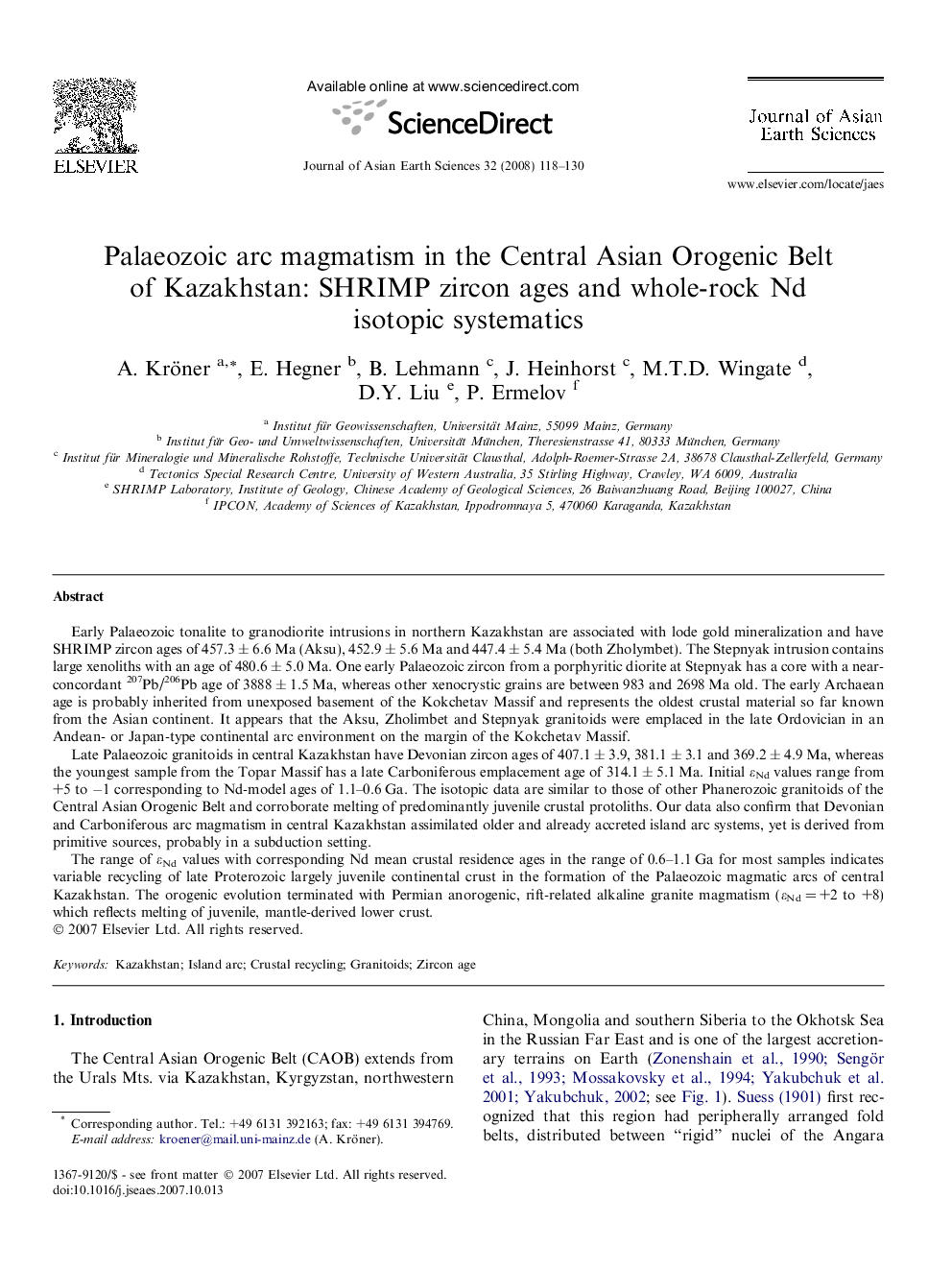| کد مقاله | کد نشریه | سال انتشار | مقاله انگلیسی | نسخه تمام متن |
|---|---|---|---|---|
| 4732353 | 1640435 | 2008 | 13 صفحه PDF | دانلود رایگان |

Early Palaeozoic tonalite to granodiorite intrusions in northern Kazakhstan are associated with lode gold mineralization and have SHRIMP zircon ages of 457.3 ± 6.6 Ma (Aksu), 452.9 ± 5.6 Ma and 447.4 ± 5.4 Ma (both Zholymbet). The Stepnyak intrusion contains large xenoliths with an age of 480.6 ± 5.0 Ma. One early Palaeozoic zircon from a porphyritic diorite at Stepnyak has a core with a near-concordant 207Pb/206Pb age of 3888 ± 1.5 Ma, whereas other xenocrystic grains are between 983 and 2698 Ma old. The early Archaean age is probably inherited from unexposed basement of the Kokchetav Massif and represents the oldest crustal material so far known from the Asian continent. It appears that the Aksu, Zholimbet and Stepnyak granitoids were emplaced in the late Ordovician in an Andean- or Japan-type continental arc environment on the margin of the Kokchetav Massif.Late Palaeozoic granitoids in central Kazakhstan have Devonian zircon ages of 407.1 ± 3.9, 381.1 ± 3.1 and 369.2 ± 4.9 Ma, whereas the youngest sample from the Topar Massif has a late Carboniferous emplacement age of 314.1 ± 5.1 Ma. Initial εNd values range from +5 to −1 corresponding to Nd-model ages of 1.1–0.6 Ga. The isotopic data are similar to those of other Phanerozoic granitoids of the Central Asian Orogenic Belt and corroborate melting of predominantly juvenile crustal protoliths. Our data also confirm that Devonian and Carboniferous arc magmatism in central Kazakhstan assimilated older and already accreted island arc systems, yet is derived from primitive sources, probably in a subduction setting.The range of εNd values with corresponding Nd mean crustal residence ages in the range of 0.6–1.1 Ga for most samples indicates variable recycling of late Proterozoic largely juvenile continental crust in the formation of the Palaeozoic magmatic arcs of central Kazakhstan. The orogenic evolution terminated with Permian anorogenic, rift-related alkaline granite magmatism (εNd = +2 to +8) which reflects melting of juvenile, mantle-derived lower crust.
Journal: Journal of Asian Earth Sciences - Volume 32, Issues 2–4, 31 March 2008, Pages 118–130